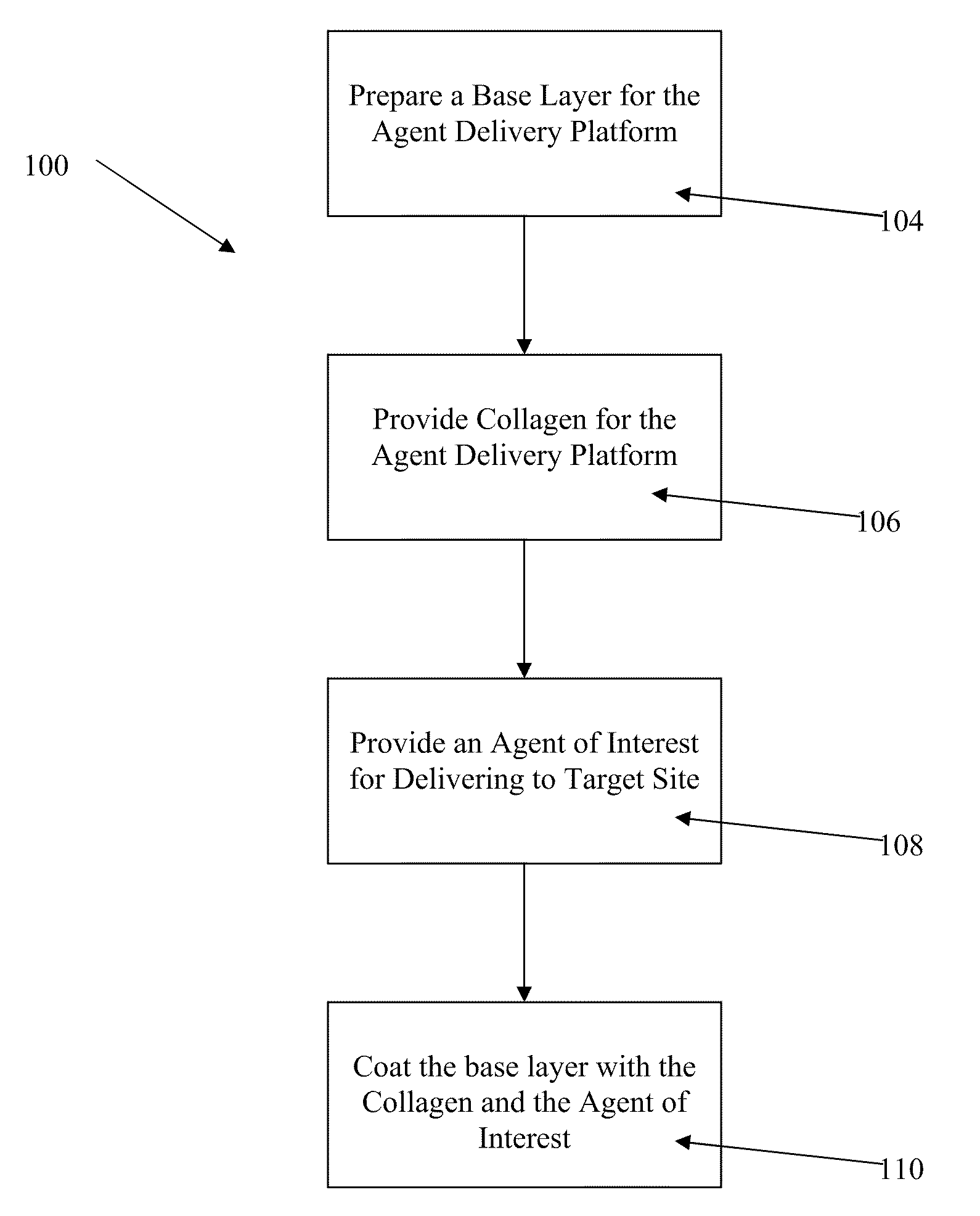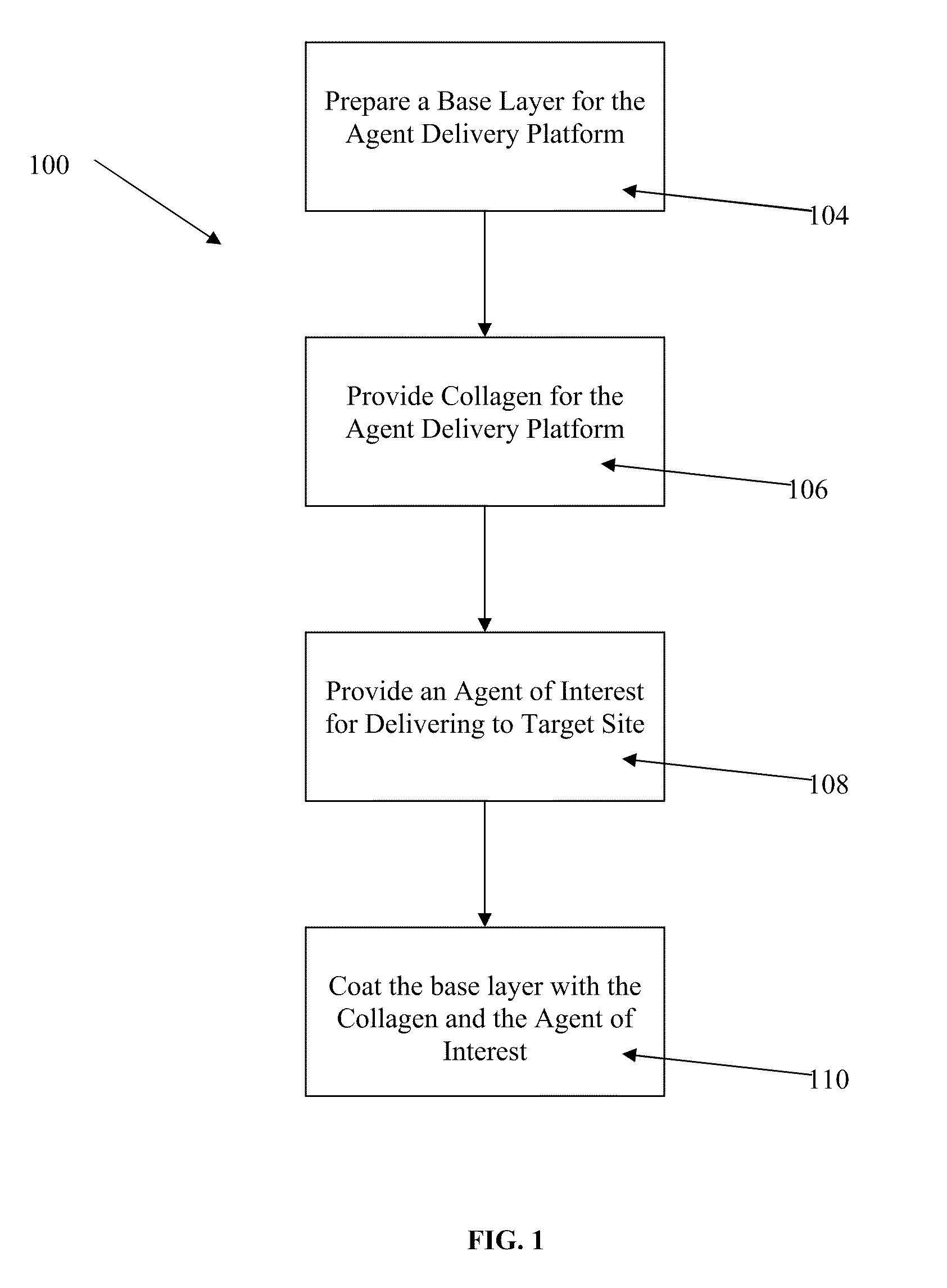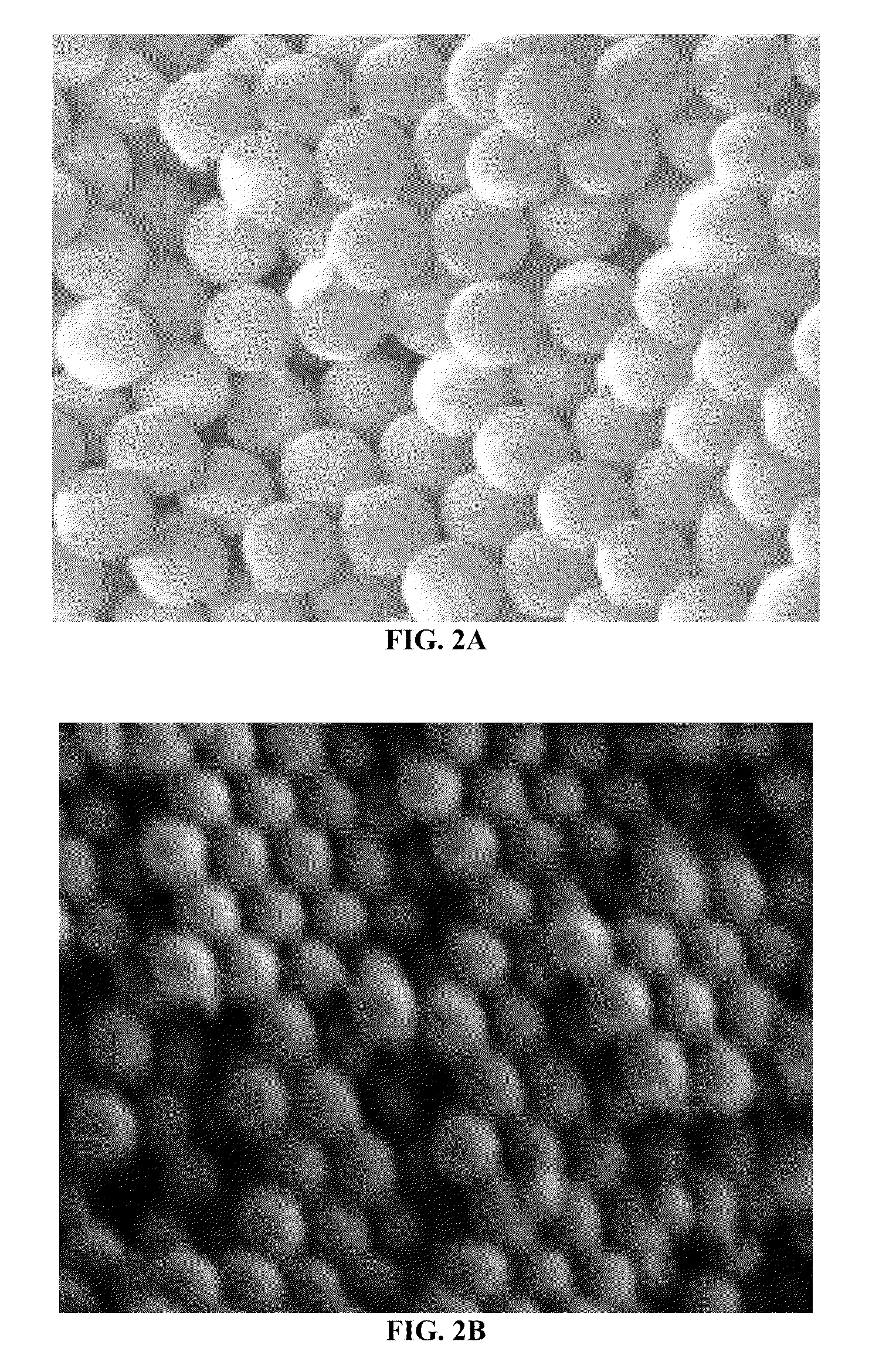Systems and Methods for Targeted and Controlled Delivery of Agents
a technology of targeted and controlled delivery and agents, applied in the direction of biocide, antibody medical ingredients, peptide/protein ingredients, etc., can solve the problems of unfavorable drug delivery, device lack of precision, and certain limitations, so as to reduce or eliminate side effects on areas, enhance bioavailability of agents, and reduce or eliminate effects
- Summary
- Abstract
- Description
- Claims
- Application Information
AI Technical Summary
Benefits of technology
Problems solved by technology
Method used
Image
Examples
examples
Methods
[0078]Colloidal crystals were grown using a slow crystallization process of monodispersed aqueous silica colloids in a glass cylinder, typically for 10 months at ambient temperature. Zakhidov (1998). Resulting deposits were polycrystalline with rod-like single crystals, which were sintered for several hours at 700-750° C. With reference to FIG. 2A, the crystals thus obtained were closely packed, interconnected silicon dioxide spheres arranged in an FCC lattice structure. The diameter of such spheres can range from about 20 nm to about 10 μm, with interconnected voids between the spheres; the silica colloids used in the studies described herein had sphere diameters between about 200 and about 400 nm. The crystals were cut using a low-speed diamond saw, and polished to a thickness of less than a millimeter, to ensure that when tested, they would be suspended above monolayer cultures. Inverse carbon replicas of the colloidal crystals were fabricated using the phenolic resin rout...
PUM
| Property | Measurement | Unit |
|---|---|---|
| thickness | aaaaa | aaaaa |
| temperatures | aaaaa | aaaaa |
| diameter | aaaaa | aaaaa |
Abstract
Description
Claims
Application Information
 Login to View More
Login to View More - R&D
- Intellectual Property
- Life Sciences
- Materials
- Tech Scout
- Unparalleled Data Quality
- Higher Quality Content
- 60% Fewer Hallucinations
Browse by: Latest US Patents, China's latest patents, Technical Efficacy Thesaurus, Application Domain, Technology Topic, Popular Technical Reports.
© 2025 PatSnap. All rights reserved.Legal|Privacy policy|Modern Slavery Act Transparency Statement|Sitemap|About US| Contact US: help@patsnap.com



